

A longhouse resident (pic above) making an international call from
the pre-paid public payphone installed in the ruai.
The solar installation on the far right (pic below) on a hillock overlookingthe Kerapa Spak longhouse (left)
IBC COMPLETES SOLAR HYBRID SYSTEM IN
KERAPA SPAK, BETONG
KUCHING (May 1, 2010): Life will not be the same anymore in the Iban longhouse of Kerapa Spak situated in the interiors of Sarawak’s Betong Division. The 500 inhabitants here have become the fortunate and gifted ones today to enjoy a solar hybrid system which powers up all night long.
The system dubbed SHS (solar hybrid system) was installed at a feverish pace over a period of four months by IBC Solar Teknik Sdn Bhd, the main contractors who are in a joint technical co-operation with Sarawak based Carbon Capital Corporation Sdn Bhd.
The German based technology, reputed to be the best technology in the solar industry was realised in Kerapa Spak at a cost of RM4.5 million – a cost which is protected by its quality and durability.
The IBC system complies with Europe’s IEC 616 standards wherein power output is guaranteed for 25 years – a definition which spells out the fact that capability does not drop more than 80 per cent failing which the supplier would have to replace the product.
These are the IEC standards upheld by IBC when they did their installation at Kerapa Spak which would have far–reaching effects on the capabilities of the longhouse folk in this particular locality.
The Chief Exectuive Officer of IBC Solar Teknik Ahmad Nazri Ibrahim said that in addition to the lighting -up of the longhouse, the surrounding area’s street lighting, the community area and church have also been lighted up.
“With power comes everything else and among the possibilities that have already made its mark is the pre-paid satellite uplinked telephony system,” he said.
“Longhouse folk are now practically queueing daily up to use the pay phone as they can call anywhere in the world and it will be a matter of time before they join the cyber world with internet access and broadband capabilities besides installing Astro TV.”
Nazri has his reasons for selecting Sarawak and as he puts it, “It is my conscientious belief that after more than 45 years of independence with Malaysia, our brother and sisters in the remote interiors of Sarawak and Sabah are somewhat detached and isolated from mainstream infrastructure development.”
“How are they to develop if they keep on living in such isolation occurring naturally or by design, I wonder.
“They still have no power, limited power in most places, no clean and piped water, no digital information super highway vide the internet and in my honest view, this is completely unacceptable if you see it against the background of a nation trying to scramble for a developed nation status.”
The installation at Kerapa Spak features the construction of a solar house, putting up of the solar modules, inverter, load and battery banks which take up to 40 per cent of the cost. Work was also hampered by the accessibility as most of the things had to be taken up river on five to six-hour longboat rides from Pengkalan in Betong.
The irony however was that despite this being a corporate social responsibility CSR) of IBC with absolutely no cost to the State or Federal governments, there was no other form assistance extended to them from agencies or even the Royal Malaysian Air Force (RMAF) which flatly refused to airlift the equipment citing cost as a reason. IBC had to resort to using costly private helicopter charters to airlift the heavy components.
There is no road access to this longhouse as everything is dependent on the river and the nightmarish work of bringing equipment up will long live in the memories of the team of engineers and technicians who put up installation together.
This added to other logistical frustrations which were encountered by the IBC team over the last four months specially in getting construction material organised in the thick of the jungles.
By no measure was it an easy task for IBC Solar from leveling a jungle clearing ona nearby hillock to forming a clearing and a helipad and making concrete bricks to name a few tasks that were achieved.
The solar hybrid system, according to Nazri is guaranteed to be safe with no possibility of its products either exploding or igniting a fire and with no moving parts, there is less maintenance, noise and above all being environment-friendly.
Being AC coupling in character, the system comprises a 70 per cent solar and a 30 per cent diesel generator back up and is designed to last for 25 years thus ensuring a clean and friendly environment.
IBC, said Nazri, would not be maintaining this CSR project but nevertheless he added, they were in talks with the State Government to appoint IBC Solar under a normal maintenance contract for a period of two years..
What used to be pitch darkness after diesel-powered generators are shut down to save on cost, is now a thing of the past in Kerapa Spak.
The second phase of this project shall witness the installation of dedicated power points for individual “pintu” which will enable longhouse folk to draw power for their individual household needs to run their hi-fis, refrigerators and other appliances.
“With this comes tapped clean and filtered drinking water with the installation of a membrane pump system powered by the solar hybrid system. A longhouse with power, communication and clean water completes the agenda providing the basic amenities and providing the longhouse folk an opportunity to move forward and engage themselves and their lifestyles in the mainstream of development,” said Ahmad Nazri.
IBC represents one of the best German-based technology partners in the form of IBC Solar AG which boasts the most advanced technology and products besides being the initiator of solar technology and currently spearheading the industry.
In the Kerapa Spak project IBC functions as the main contractor on top of being the system designer and integrator. The peninsular based company is in a joint technical co-operation with Kuching-based Carbon Capital Corporation (CCC) Sdn BHd. The project also involved a telecommunications component which witnessed the active participation of Paycomm Sdn Bhd.
Nazri feels that Project Sunshine would aptly describe what’s happening in Kerapa Spak in the rural electrification scheme (RES) of things.
The Kerapa Spak longhouse was selected by Sarawak Chief Minister Pehin Sri Haji Abdul Taib Mahmud as part of his overall vision to provide cheap and versatile electricity to pockets of settlements in longhouses and villages in the remote interiors of the state.
“Electricity is synonymous with the quality of life, security and growth and a good infrastructure, reliable power generation and independence from raw material imports are all essential for prosperity and satisfaction,” said Ahmad Nazri.
“Kerapa Spak is in that position and is now demonstrating this
“It will be a far cry from the manner in which the Iban longhouse community conducted their lives before.”
The investment, Ahmad Nazri feels, would go a long way in proving that for one the public and private sector can engage by way of policy. This he added comes in tandem with the government’s call for greater policy engagement between the two sectors in working together for the benefit of the people.
This project comes as one of the company’s major corporate social responsibility (CSR) initiatives in Sarawak.
The most noteworthy feature of this solar hybrid system is that in essence, it can not only supply electricity but also support water supply, power up systems for healthcare, ensure security with telecommunications link ups, tourism activities, education and cottage industries in the future.
Ahmad Nazri said the SHS under normal circumstances would require between three to four months to install making it one of the fastest solar applications readily available in the market as proven by the project in Kerapa Spak.
IBC Solar Teknik’s role as a systems integrator, is actually appropriately positioned to customise and tailor-make installations to suit each and every location and their respective peculiarities. This is evidenced in Project Sunshine which has taken shape in Kerapa Spak.
The system dubbed SHS (solar hybrid system) was installed at a feverish pace over a period of four months by IBC Solar Teknik Sdn Bhd, the main contractors who are in a joint technical co-operation with Sarawak based Carbon Capital Corporation Sdn Bhd.
The German based technology, reputed to be the best technology in the solar industry was realised in Kerapa Spak at a cost of RM4.5 million – a cost which is protected by its quality and durability.
The IBC system complies with Europe’s IEC 616 standards wherein power output is guaranteed for 25 years – a definition which spells out the fact that capability does not drop more than 80 per cent failing which the supplier would have to replace the product.
These are the IEC standards upheld by IBC when they did their installation at Kerapa Spak which would have far–reaching effects on the capabilities of the longhouse folk in this particular locality.
The Chief Exectuive Officer of IBC Solar Teknik Ahmad Nazri Ibrahim said that in addition to the lighting -up of the longhouse, the surrounding area’s street lighting, the community area and church have also been lighted up.
“With power comes everything else and among the possibilities that have already made its mark is the pre-paid satellite uplinked telephony system,” he said.
“Longhouse folk are now practically queueing daily up to use the pay phone as they can call anywhere in the world and it will be a matter of time before they join the cyber world with internet access and broadband capabilities besides installing Astro TV.”
Nazri has his reasons for selecting Sarawak and as he puts it, “It is my conscientious belief that after more than 45 years of independence with Malaysia, our brother and sisters in the remote interiors of Sarawak and Sabah are somewhat detached and isolated from mainstream infrastructure development.”
“How are they to develop if they keep on living in such isolation occurring naturally or by design, I wonder.
“They still have no power, limited power in most places, no clean and piped water, no digital information super highway vide the internet and in my honest view, this is completely unacceptable if you see it against the background of a nation trying to scramble for a developed nation status.”
The installation at Kerapa Spak features the construction of a solar house, putting up of the solar modules, inverter, load and battery banks which take up to 40 per cent of the cost. Work was also hampered by the accessibility as most of the things had to be taken up river on five to six-hour longboat rides from Pengkalan in Betong.
The irony however was that despite this being a corporate social responsibility CSR) of IBC with absolutely no cost to the State or Federal governments, there was no other form assistance extended to them from agencies or even the Royal Malaysian Air Force (RMAF) which flatly refused to airlift the equipment citing cost as a reason. IBC had to resort to using costly private helicopter charters to airlift the heavy components.
There is no road access to this longhouse as everything is dependent on the river and the nightmarish work of bringing equipment up will long live in the memories of the team of engineers and technicians who put up installation together.
This added to other logistical frustrations which were encountered by the IBC team over the last four months specially in getting construction material organised in the thick of the jungles.
By no measure was it an easy task for IBC Solar from leveling a jungle clearing ona nearby hillock to forming a clearing and a helipad and making concrete bricks to name a few tasks that were achieved.
The solar hybrid system, according to Nazri is guaranteed to be safe with no possibility of its products either exploding or igniting a fire and with no moving parts, there is less maintenance, noise and above all being environment-friendly.
Being AC coupling in character, the system comprises a 70 per cent solar and a 30 per cent diesel generator back up and is designed to last for 25 years thus ensuring a clean and friendly environment.
IBC, said Nazri, would not be maintaining this CSR project but nevertheless he added, they were in talks with the State Government to appoint IBC Solar under a normal maintenance contract for a period of two years..
What used to be pitch darkness after diesel-powered generators are shut down to save on cost, is now a thing of the past in Kerapa Spak.
The second phase of this project shall witness the installation of dedicated power points for individual “pintu” which will enable longhouse folk to draw power for their individual household needs to run their hi-fis, refrigerators and other appliances.
“With this comes tapped clean and filtered drinking water with the installation of a membrane pump system powered by the solar hybrid system. A longhouse with power, communication and clean water completes the agenda providing the basic amenities and providing the longhouse folk an opportunity to move forward and engage themselves and their lifestyles in the mainstream of development,” said Ahmad Nazri.
IBC represents one of the best German-based technology partners in the form of IBC Solar AG which boasts the most advanced technology and products besides being the initiator of solar technology and currently spearheading the industry.
In the Kerapa Spak project IBC functions as the main contractor on top of being the system designer and integrator. The peninsular based company is in a joint technical co-operation with Kuching-based Carbon Capital Corporation (CCC) Sdn BHd. The project also involved a telecommunications component which witnessed the active participation of Paycomm Sdn Bhd.
Nazri feels that Project Sunshine would aptly describe what’s happening in Kerapa Spak in the rural electrification scheme (RES) of things.
The Kerapa Spak longhouse was selected by Sarawak Chief Minister Pehin Sri Haji Abdul Taib Mahmud as part of his overall vision to provide cheap and versatile electricity to pockets of settlements in longhouses and villages in the remote interiors of the state.
“Electricity is synonymous with the quality of life, security and growth and a good infrastructure, reliable power generation and independence from raw material imports are all essential for prosperity and satisfaction,” said Ahmad Nazri.
“Kerapa Spak is in that position and is now demonstrating this
“It will be a far cry from the manner in which the Iban longhouse community conducted their lives before.”
The investment, Ahmad Nazri feels, would go a long way in proving that for one the public and private sector can engage by way of policy. This he added comes in tandem with the government’s call for greater policy engagement between the two sectors in working together for the benefit of the people.
This project comes as one of the company’s major corporate social responsibility (CSR) initiatives in Sarawak.
The most noteworthy feature of this solar hybrid system is that in essence, it can not only supply electricity but also support water supply, power up systems for healthcare, ensure security with telecommunications link ups, tourism activities, education and cottage industries in the future.
Ahmad Nazri said the SHS under normal circumstances would require between three to four months to install making it one of the fastest solar applications readily available in the market as proven by the project in Kerapa Spak.
IBC Solar Teknik’s role as a systems integrator, is actually appropriately positioned to customise and tailor-make installations to suit each and every location and their respective peculiarities. This is evidenced in Project Sunshine which has taken shape in Kerapa Spak.
The ruai of the longhouse lighted up just before sunset.
The solar modules and the solar house
A close-up of the solar modules which are powering up the Kerapa Spak longhouse.
Longhouse folk in the ruai area of the longhouse with the lights already switched on in the evening.
The site of the solar and solar modules when construction began four months ago.
Construction material at site when work commenced in November 2009
River bed rocks practically carried up from using boats and manpower in gunny sacks to form the bedding base for the solar modules.
The site in March 2010
A helicopter used to bring up the heavy equipment about to land in a clearing made as a helipad
next to the solar house and modules.
Equipment practically made it by air from German and Kuala Lumpur to Kuching and then by road to Betong and on loangboats to Kerapa Spak.
Netting being prepared to airlift the battery banks by private helicopter charter from Betong to Kerapak Spak
An aerial view of the IBC solar installation (right) and the Kerapa Spak longhouse on the left.
The Kerapa Spak longhouse lighted up at nightwith solar power.
The solar modules and the solar house
A close-up of the solar modules which are powering up the Kerapa Spak longhouse.
Longhouse folk in the ruai area of the longhouse with the lights already switched on in the evening.
The site of the solar and solar modules when construction began four months ago.
Construction material at site when work commenced in November 2009
River bed rocks practically carried up from using boats and manpower in gunny sacks to form the bedding base for the solar modules.
The site in March 2010
A helicopter used to bring up the heavy equipment about to land in a clearing made as a helipad
next to the solar house and modules.
Equipment practically made it by air from German and Kuala Lumpur to Kuching and then by road to Betong and on loangboats to Kerapa Spak.
Netting being prepared to airlift the battery banks by private helicopter charter from Betong to Kerapak Spak
An aerial view of the IBC solar installation (right) and the Kerapa Spak longhouse on the left.
The Kerapa Spak longhouse lighted up at nightwith solar power.
.jpg)
.jpg)

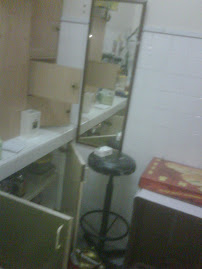
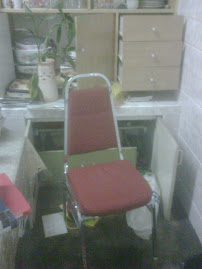

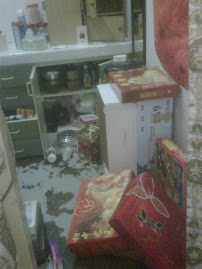
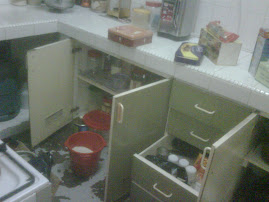
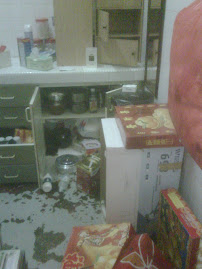
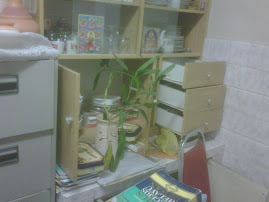
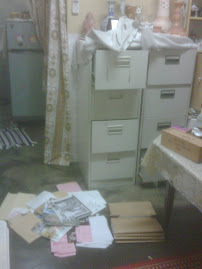
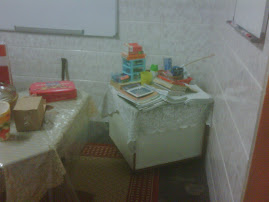
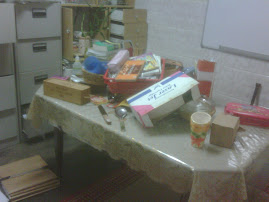
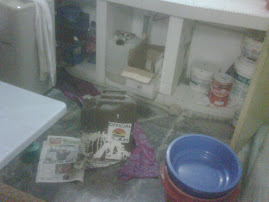
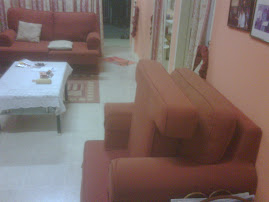
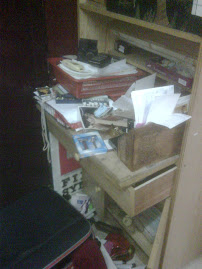
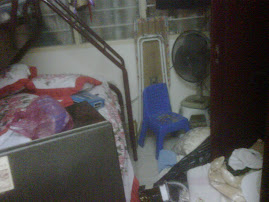
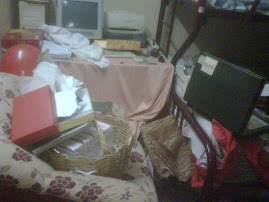


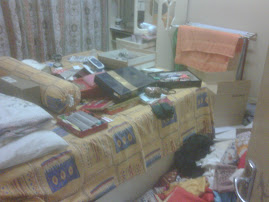










we have been going to kerapa every year for 7 years now. and yes, when we went this year, we saw the many changes. do you know that the solar project which was supposed to provide them with electricity 24/7 is not as it is? so much money spent and yet if they switch on just one light bulb, nothing else can be switched on as well? as such, they have to still rely on the generator. did you know that they had the longhouse residents perform hard labour without pay because "we are doing this for YOUR longhouse!" all thanks to greed and corruption. sadly, this is what malaysia has become. what a disappointment.
ReplyDelete